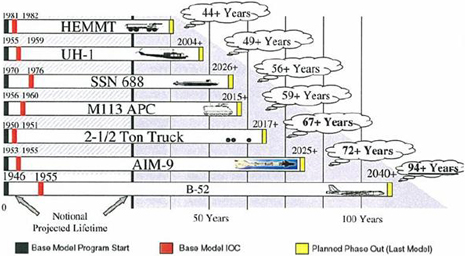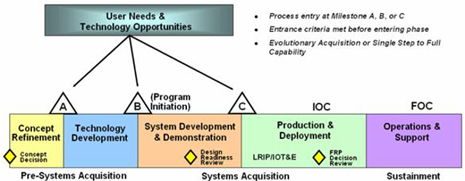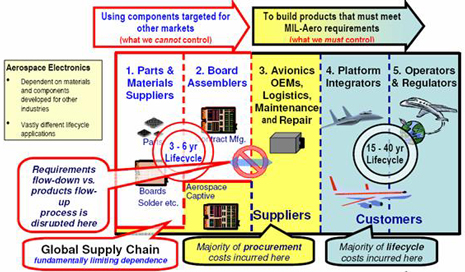Read below to learn more about defense and aerospace electronics supply chains. Vigilance in monitoring component manufacturers is key. Counterfeit parts likelihood increases during transition to lead free. Effort becomes more critical when considering use of commercial off-the-shelf (COTS) components. Telecommunications, medical electronics manufacturers face similar electronics assembly challenges.
You would be wrong to think controlling the influx of lead free finished components and soldered assemblies are an incoming inspection and first-piece production concern. If your customer programs prohibit use of pure tin (Sn) finishes and lead free solders, components and assemblies having pure Sn finishes and lead free solders cannot be used on deliverable electronics assemblies.
SEE ALSO
Best practices for EMS manufacturing RFQ quotes
EMS Manufacturer internal cost vs OEM quoted fees vs OEM target price
How to drive cost out of your manufacturing product portfolio
Traditionally, this is how aerospace electronics manufacturers, telecommunications, and medical electronics manufacturers would control the supply chain of components and assemblies.
However, if restrictions are enforced throughout a product’s entire life cycle (which could span several decades) controlling supply chains becomes more challenging.
As Figure 1 depicts, fielded aerospace programs and their respective electronics are in service beyond their original projected lifetime.
Fig. 1 Examples of fielded programs and their lifecycles1

In your search results, you can further target additional End Markets and/or Services or Geographies.
Effective vs. efficient supply chain management
Electronics supply chain management is an integrated process beginning with planning the acquisition of customer-driven requirements for materials and services and ends with delivery of materials to the operational customer, including any material returns / disposal segments of the process, plus the flow of required information in both directions among suppliers; logistics managers, and customers.
You can see how effective management of electronics supply chains is applied through entire product life cycles as defined in Figure 2.
Fig. 2 US Department of Defense (DoD) 5000 defense acquisition framework2

Looking closer at a typical DoD program, below I share with you the relative phases of a DoD program life cycle:
Concept refinement
This phase refines the initial concept and develops a technology development strategy (TDS).Technology development
This phase reduces technology risk and determines the appropriate set of technologies to be integrated into a full system.System development / demonstration
This phase develops a system (or at least an increment of capability); reducing integration and manufacturing risks (technology risk reduction occurs during technology development); ensuring operational supportability with attention to reducing the logistics footprint; implement human systems integration (HSI); designing for producibility; ensuring affordability and the protection of critical program information (CPI) by implementing appropriate techniques such as anti-tamper; and demonstrate system integration, interoperability, safety, and utility.
Find military ODM/design servicesElectronics providers in your search results will offer military electronics design services. You will be able to further target your options from the results page.
Production and deployment:
The objective of this phase is to achieve an operational capability that satisfies mission needs. Operational test and evaluation shall determine the effectiveness and suitability of the system.Operations / support
This activity’s objective is to support a fielded program in a manner meeting operational support performance requirements and sustaining the system in the most cost-effective manner over its total life cycle.
Within each of product / program’s life cycle phases above, the availability and characteristics of components and assemblies within the supply chain must be considered.
5 Segments of aerospace electronics supply chains
Meanwhile, it is also important to note the global electronics supply chain in aerospace electronics consists of five (5) members, per Figure 3 and Table 1, within two (2) sets:
Fig. 3 Aerospace electronics global supply chain3

Table 1: Supply chain procurement and customers3
| Procurement |
Customers |
| Parts and material suppliers | Platform integrators |
| PCB assemblers | Operators and regulators |
| Suppliers |
As a result, aerospace programs responsible for providing sustainability support to fielded electronics assemblies today must be concerned with whether tin lead (SnPb) finished components and soldered assemblies will remain SnPb during the life of the product.
You can see how this effort becomes daunting when taking into account legislation for REACH (Registration, Evaluation, Authorization and Restriction of Chemicals), where electronics manufacturers are required to disclose materials used to manufacture hardware. (Read: ‘6 REACH compliance steps for aerospace defense foreign military sale‘)
For aerospace applications, this effort becomes even more intricate and critical when considering the use of commercial off-the-shelf (COTS) components for aerospace and military systems.
Per the 1994 Perry Memorandum, issued by then U.S. Secretary of Defense William Perry and prohibiting the use of most defense standards without a waiver, manufacturers can apply COTS hardware to aerospace and military systems provided COTS components can survive the environmental stresses associated with aerospace and military systems. This allows such systems to be designed and manufactured less expensively than with ‘military-rated’ components and assemblies.
Due to the European Union’s 2003 RoHS Directive, SnPb solders and component finishes are banned from use on commercial electronics assemblies. While there are exemptions to the RoHS directive (i.e., aerospace, telecommunications, medical…) these exemptions are expected to expire in the near future.
In addition, the size of these exempt markets represents less than 5% of the entire global electronics manufacturing market, therefore, component manufacturers have no financial incentive to continue to support these markets with SnPb-finished components and SnPb-soldered hardware.
In your results, you can further target more Markets, more Geographies, and additional Services options.
To minimize the risk to a program from the supply chain during the operations and support phase of a program, the following activities should be initiated:
1. Understand your customer’s requirements: Your customer ultimately has the authority to impose any restrictions on using components and assemblies using pure Sn finishes and lead free solders. The aerospace electronics industry is using the following levels, based on GEIA tin whisker specifications (www.geia.org/standards-and-publications):
Level 1: No restrictions on lead free solders and Sn finish usage.
Level 2: Sn finishes are allowed under specific circumstances.
Level 3: Use of pure Sn finishes are prohibited and measures must be taken to verify compliance.
If your customer changes their requirements, be prepared to discuss any associated reliability, cost, and schedule implications.
For example, would refinishing components from Sn to SnPb void any warranties from components manufacturers? How much additional cost will the refinishing process represent to the program? What is the schedule impact to the additional component refinishing operations? These are just a few of the questions that would need to be addressed due to a change in customer requirements.
2. Monitor your suppliers: Program offices usually flow down their customer requirements to their suppliers at the start of a program. When electronics assemblies are in the field, the program office must assure any changes to the customer’s requirements are communicated to suppliers.
Conversely, if a supplier changes his processes or materials, with respect to pure Sn finishes and lead free solders, are such changes acceptable to the customer?
3. Monitor your component manufacturers: The goal here is to identify components and sub-assemblies that are candidates for being converted from tin lead (SnPb) to pure tin (Sn) finishes and lead free solders. (Such finish and solder conversions could render current components and sub-assemblies obsolete)
As with suppliers, if a component manufacturer changes his processes or materials, with respect to pure tin (Sn) finishes and lead free solders, are such changes acceptable to the customer? Similarly, the specter of counterfeit parts becomes apparent.
As a reminder, knowledge of component finishes becomes more critical when taking into account REACH which requires electronics manufacturers to register materials within their products with the European Chemicals Agency (ECHA – www.echa.europa.eu)
4. Counterfeit parts analysis: The specter of counterfeit parts becomes apparent during this transition time from tin lead (SnPb) to lead free finished components. It is possible the supply chain can become infected with lead free components and sub-assemblies instead of tin lead (SnPb).
Action items to prevent counterfeit parts from entering the supply chain include:
a.) Identifying and approving independent distributors with systems and processes to screen out counterfeit parts prior to delivery.
b.) Define purchase order / subcontract requirements for counterfeit controls.
c.) Develop procurement, test, and inspection guidelines to screen for counterfeit parts.
d.) Establish training guidelines to educate the work force on identification and disposition of counterfeit parts.
References
1. Lead Free Soldering In A Production Environment by American Competitiveness Institute; Philadelphia, Pennsylvania; September, 2005
2. Department of Defense Directive 5000.1; The Defense Acquisition System; May 12, 2003
3. DoD Instruction 5000.2, Operation of the Defense Acquisition System; May 12, 2003
4. AIA Lead-Free Electronics Strategy: Pb-Free Is Not Free! by Edward A. Morris, Director, Hardware and Manufacturing; Corporate Engineering and Technology; Lockheed Martin Corporation; SSTC Meeting #22; Mesa, Arizona; February 2, 2009
Get list of EMS manufacturers for your requirements (Its free)
Save time and money. Find quality EMS manufacturers. Fast. Venture Outsource has a massive, global database of contract electronic design and manufacturing capabilities. Speak with a Provider Advisor.
“Was able to very quickly find details on the important elements of setting up EMS and ODM partnerships, talked with an advisor for personalized info on quality providers matching our requirements while getting up to speed quickly about the industry and connect with key staff from like-minded companies and potential partners. Great resource.”
— Jeff Treuhaft, Sr. Vice President, Fusion-IO
Advisors tell you matches we find for your needs, answer your questions and, can share EMS industry knowledge specific to your industries and markets.





